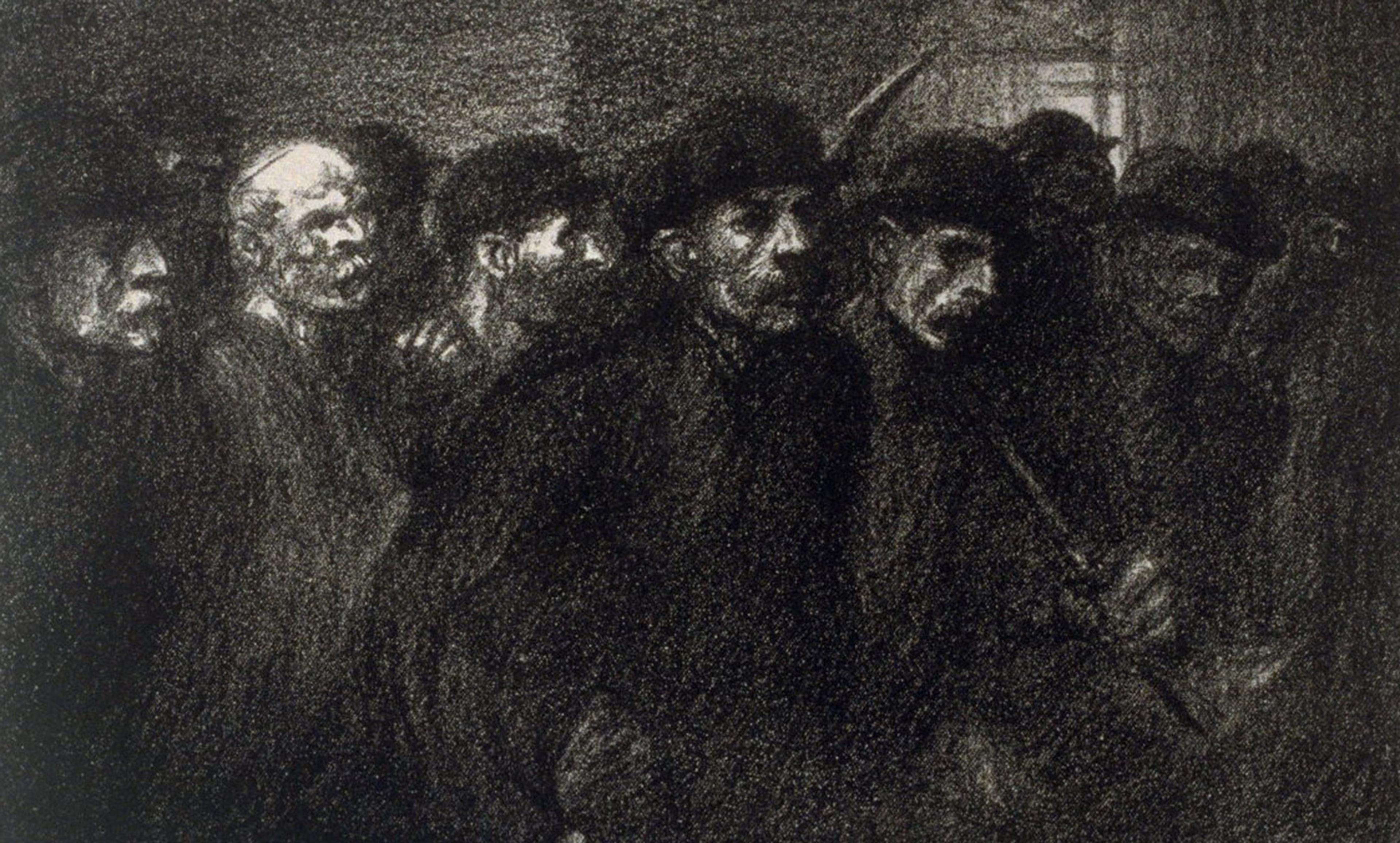Architects office, 1966. Photo by H Armstrong Roberts/Getty Images
Why do we work? Many of us might give a simple transactional answer to the question: we work in order to make money. For the American psychologist Abraham Maslow (1908-70), and the management thinkers inspired by his theory of motivation, people’s motives for working could not be reduced to a paycheck. Instead, Maslow and his followers argued in management texts and training seminars that people work to fulfil higher psychological needs. People work to become self-actualised and to find meaning – provided that meaning can be found in the mundane realities of working life.
First proposed by Maslow in 1943, the hierarchy of needs is a grand theory of human motivation that arranges all motives into a ladder, from the basic physiological needs (for food and shelter) upward to needs for safety, for belonging, for esteem and, at the apex, the motive for self-actualisation. At the top rung of the ladder, the self-actualisation motive was a future-oriented striving that drove humans to seek meaning and fulfilment in the world.
Maslow’s work began infiltrating management in the 1950s and ’60s, as the business trade press and management theorists picked up humanistic psychology to adapt managerial theories of motivation for a new era. For Maslow, corporations offered both an experimental site for him to observe human psychology – which he did as a consultant for California companies – and a site for humans to realise their higher-order needs through self-actualised work.
Why was corporate America drawn to the hierarchy of needs? They liked it because it offered both a grand narrative and master explanation for human psychology in a changing society and a practical guide to managing people. It is precisely in the tension between these two visions of the hierarchy of needs – the reductive diagram and the rich social theory – that the hierarchy of needs acquires its power and its politics.
The 1960s, renowned as a decade for social experimentation, was also an era when corporations were experimenting with new structures and styles of work. Against the backdrop of the counterculture, social movements and consumer society, management writers and social theorists alike argued that a widespread transformation in values was afoot – a transformation that required new approaches to managing people and marketing to consumers.
Management thinkers drew on Maslow to develop new theories of ‘participatory management’ that professed to give workers more autonomy and authority in work. Responding to criticisms of bureaucratic conformity and alienation, management gurus wielded the hierarchy of needs to argue that psychological fulfilment was not opposed to but in fact compatible with corporate capitalism. We could work hard, make money, and be happy. Win/win, right?
A burning question, left unresolved in management discussions of the hierarchy of needs, was the extent to which all jobs could offer scope for self-actualisation. The hierarchy of needs does admit a range of differences among individuals and organisations, suggesting that, for some people, work is just a paycheck. Some experiments in redesigning jobs did seek to address all levels of the corporate hierarchy, from janitorial work to executive work, but many substituted rhetoric for real change. One management thinker, the American psychologist Frederick Herzberg, used the hierarchy of needs to argue in The Motivation to Work (1959) that companies needn’t provide better benefits to workers, because better benefits had only made workers entitled, rather than increased productivity. Such is the dark side of motivation.
It is certainly not coincidental that a motivational theory dubbed the ‘hierarchy’ of needs was adopted in companies ruled by hierarchical organisational charts. The hierarchy of needs could all too easily map onto work hierarchies, with jobs at the top providing more scope for self-actualisation (while also commanding higher paychecks). Uneven distributions of work and workers surround the promise of self-actualised work; devalued work, which we don’t expect to bring satisfaction, and on the flipside, overvalued work, supposed to be all of life.
As a theory of intrinsic motivation, the hierarchy of needs emphasises intrinsic motives, not external rewards. It suggests that your boss doesn’t need to punish or reward, because you’ll have your own intrinsic motive to work to achieve meaning and fulfilment. It’s a powerful force, that work ethic. The strength of this work ethic, especially in today’s professional class, is why we find company employees who sometimes take fewer vacations than they’re entitled to.
Maslow didn’t invent the idea of self-actualised work, and nor did the 20th-century management consultants who implemented these ideas. We can go back to the German sociologist Max Weber to find similar invocations of work as a spiritual, more than economic, vocation – an ethic of work that Weber in 1905 argued was central to Western capitalism. Indeed, the work ethic is an ideology at once remarkably tenacious and eminently flexible: while its constitutive claim – devotion to work as the centre of life – remains consistent, the rewards promised by the ethic vary in historically specific ways, from the promise of social mobility to the promise of self-actualisation.
In the decades since Maslow first proposed the now-iconic hierarchy of needs, it has acquired a life of its own. By the 1980s, it had become firmly entrenched in business textbooks and management education. Marketing firms, for example, drew on the hierarchy of needs in both their advertising work and their management training. Depicted in its iconic pyramid form – a pyramid that Maslow himself did not create – the hierarchy of needs continues to circulate in management textbooks and as internet memes. Even beyond memes and textbooks, what is most significant is how the ideas and ideologies underpinning the hierarchy of needs continue to resonate with present-day concerns about work, society and the self.
In the span of writing this article, I found myself haunted by the hierarchy of needs; it was referenced on my Instagram feed and in a blog post about writing. Writing about the work ethic while embroiled in academic work culture makes it similarly difficult to escape the ghost of the hierarchy of needs. Academic work, like work in creative industries and the nonprofit sector, is particularly susceptible to the celebratory rhetoric that one’s work should be motivated by passion, not a paycheck. Why else pursue a PhD, or a career in the creative industry, if you don’t love it?
Nothing exemplifies the promises and perils of self-actualised work better than the cultural conversations around ‘do what you love’. The injunction to ‘do what you love’ has had no shortage of critics, who point out its classist nature, advocate for a clearer delineation between work and life, and remind us that burnout might just be the flipside of self-actualised work.
Not all agree that work should be a calling or that we should devote ourselves wholly to work. Calls for a shorter work week, for a better social safety net or more parental leave all demand that we as a society carve out a space of life, leisure and care against work.
My argument is not that work shouldn’t be meaningful, or that pleasure cannot be found in work; my point is that we should think carefully before accepting managerial ideas of fulfilment through work, because they risk detracting from the economic and social structures that govern work. Work is work – no matter how many beer fridges or meditation seminars modern workplaces offer, and no matter how many well-intentioned trainers show slides of pyramids.






